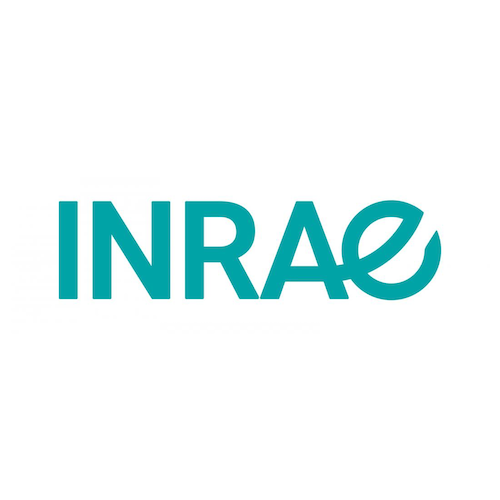INRAE, the French National Research Institute for Agriculture, Food and Environment, has been supporting the IWGSC since its inception. In particular, teams from INRAE’s Plant Biology and Breeding (PBB) division have played an active role in all IWGSC projects over the past decades. The IWGSC is extremely grateful for INRAE continuous support and for the leadership and expertise of members of the PBB division.
About INRAE
INRAE was formed in 2020 by the merger of INRA, the French National Institute for Agricultural Research, and IRSTEA, the French National Research Institute of Science and Technology for the Environment and Agriculture. Both institutes were known for the quality of their research and their great expertise. Their union has generated a critical research mass and has pooled their major infrastructures (e.g., observatories, technical platforms, data repositories), including some that are one of a kind in Europe. As a result, INRAE is uniquely suited to perform valuable research on numerous topics, including water resources, regional agricultural strategies, the preservation and restoration of biodiversity, risk anticipation and management, and digital agriculture.
GDEC
Members of the Research Unit “Genetics, Diversity and Ecophysiology of Cereals” (GDEC) produced the first BAC library of a single wheat chromosome (chromosome 3B; The Plant Journal, 2004) and later on its physical map (Science, 2008) and reference sequence (Science, 2014), establishing a template for sequencing the remaining chromosomes (Science, 2014, 2018). They worked on generating original tools (TriAnnot, ClariTE) to implement the IWGSC RefSeq assembly and annotation, and subsequent versions. They are currently the contact point for updates of RefSeq annotations, integrating manually and functionally annotated genes from the community in future annotation releases.
Contacts: Hélène Rimbert, Frédéric Choulet and Pierre Sourdille
URGI
The Plant Bioinformatics Facility of the Research Unit “Genomics-Info” (URGI) hosts the official IWGSC data repository. All data generated in IWGSC-led projects, such as assemblies and annotations, are publicly available for download, display in browsers and BLAST on the IWGSC data repository.
Contact: Michael Alaux
CNRGV
The French Plant Genomic Resources Center (CNRGV) conserves the BAC libraries of flow sorted chromosomes, developed at the Institute of Experimental Botany (IEB) (Olomouc, Czech Republic) that were used to construct physical maps for the IWGSC RefSeq. The Chinese Spring archive comprises 92 BAC libraries and 4,366,848 clones. They are available to the scientific community upon request. The CNRGV is also a service provider for plant genomics, providing high molecular weight DNA extraction, Bionano optical mapping and targeted genomic regions sequencing services for research teams.
Contact: Arnaud Bellec
An interview with Pierre Sourdille
Pierre Sourdille, INRAE sponsor representative and IWGSC Board member
Research Director
INRAE and University Clermont – Auvergne (UCA) Joint Research Unit on the Genetics, Diversity and Ecophysiology of Cereals (GDEC)
Clermont-Ferrand, France
Pierre Sourdille joined INRAE in 1995 after working six years for a private breeding company. He is leading the group “Genetics & Recombination (GeCO)” at the Joint Research Unit INRAE-University Clermont Auvergne “Genetic Diversity and Ecophysiology of the Cereals” (GDEC). As a Research Director, his research focuses on unlocking the constraints imposed by the natural control of meiotic recombination to accelerate the production of new varieties better adapted to stress. He is directly connected with the latest developments in research on meiosis. His team has developed innovative tools and applied in wheat ground-breaking technologies usually reserved to model species. His group has recognized expertise in wheat genetics and genomics. He has become a leader on wheat meiotic recombination, in particular with respect to the distribution of recombination events and with homoeologous recombination. He was present at the onset of the IWGSC in 2005 and has been a member of the Coordinating Committee since then. He was appointed to the Board of Directors in 2021.
INRAE has been sponsoring the IWGSC since its inception. Can you summarize INRAE’s participation and contributions to the consortium over these years?
The story of the wheat genome sequence started at the beginning of the 2000s. At that time, genomes of model species (Arabidopsis and rice) were sequenced and BAC libraries for tetraploid and hexaploid wheats were developed. INRA (now INRAE) was one of the main contributors to these libraries. After sequencing a few BAC clones, we realized that the synteny between wheat and rice was not as good as expected and, even between homoeologous chromosomes, alignment was far from perfect.
In the meantime, we were extremely lucky to collaborate with Jaroslav Dolezel’s team at Olomouc University in the Czech Republic to develop a strategy for using chromosome sorting to construct chromosome-specific BAC libraries. With this know-how, we had all the tools to sequence the wheat genome. However, this was clearly a daunting task for one team alone. IWGSC was launched right on time for us!
Regarding INRAE participation and contribution to the IWGSC, we started by constructing a physical map of a single chromosome because some colleagues were – rightly – skeptical about the feasibility of the task. For this, we automated BAC fingerprinting, developed a large segregating population to order BAC contigs, and designed a pipeline for selecting minimal tilling path. All these tools and approaches were further used to develop physical maps for each chromosome arm, paving the way for the first wheat genome draft sequence in 2014. After the NRGene sequencing protocol was proposed, our bioinformatic teams validated the first assembly using some unpublished sequencing data.
We also provided Chinese Spring seeds originating from the same seed lot as the one used to produce the segregating population. The same seed set is used for all analysis and colleagues can ask us for seeds if they need some.
Finally, we developed a strong expertise for annotation of genes and transposable elements, and we developed strategies to easily transfer the data from one version to the other with good traceability.
INRAE remains an important contributor to the wheat genome sequence but, clearly, this is a fantastic and successful collaborative adventure within the IWGSC!
What have been the greatest benefits of INRAE partnership with the IWGSC?
The first and undisputable benefit of this partnership is the reference sequence of the wheat genome. This has given us an incredible tool to study the structure and organization of the wheat genome. We gained access to the sequence of our favorite genes and a tool for positional cloning. With this sequence, we achieved almost the same level of knowledge as available to those working on model species.
The second benefit is to be recognized as one of the world leaders in wheat genetics and genomics. When the IWGSC started, INRAE was not as well-known for wheat as it is now, and this is the result of our involvement in the IWGSC.
Another benefit is networking. Being part of an international consortium such as the IWGSC where many topics are discussed through webinars and workshops at international meeting such as PAG is a great opportunity to create networks of colleagues on various topics of interest. Within the IWGSC we met people from all over the world, working on so many topics and with huge diversity of competences. Consequently, we were able to develop more innovative projects, to apply to international calls for funding, to send and receive international post-docs or PhDs, and to publish better papers in high-standard journals. Twenty years ago, this was just a dream for us.
Being part of the IWGSC also gives us an opportunity to access data before they are publicly released, which provides an advantage over competitors that decided not to be part of the consortium.
The IWGSC regularly releases updated versions of the reference sequence of bread wheat (RefSeq). What other resources are still needed to meet the needs of wheat scientists?
Clearly, we have now achieved a high standard for the wheat genome sequence with the last release of V2.1. There are still some gaps, but they will probably be difficult to fill in, even with new sequencing technologies like Revio. By looking at what is done in other species, the pan genome seems important. With the release of the 10+ genomes in 2020, this was an opportunity to start comparative analyses between genomes of different varieties and to see the advantages of having several genotypes sequenced. I think this should be amplified by sequencing a set of landraces representing the worldwide diversity. Sequencing more genomes will also provide tools to develop haplotype graphs that will be useful to impute the most likely sequence of varieties that have only been genotyped using high-density SNP arrays.
In your opinion, what will be the biggest advances in wheat research in the next 5-10 year?
During the last 15 years, we have spent most of our efforts in producing a high-standard reference sequence for the wheat genome and we have reached our goal. Now it is essential to link this resource to relevant biological questions related to traits of interest.
One global question could be: “How can wheat adapt to changing environmental conditions or cultural practices while maintaining or increasing yields?” The underlying question being: “How does the wheat genome react and evolve under these conditions?” This will depend on the trait and on the organ that you are studying.
I think the main advances that we have to think about could be to work on single organs, or even single cells, and how these cells communicate between each other. There are now multiple strategies to access DNA sequence, RNA expression or chromatin accessibility in a single cell. This will pave the way to identifying various molecules that can be produced within a cell and to studying how these molecules can influence the behavior of the cell itself, the relationships with other surrounding cells or even with the external compartments of the organ or the plant.
For many years we considered that having a high-quality sequence might solve many of the significant scientific questions. This resource is, of course, essential to identify genes and regulatory elements. But now we must think in three or even four dimensions, including time. Chromosomes are interacting between each other in the nucleus to express or repress genes. Molecules are produced to regulate the functioning of the cell and to make it communicate with other cells from the same organ or between organs. The plant communicates with its environment… Everything is linked, and we must think about a more integrative approach.
Is there anything that the IWGSC is not currently planning that you wish would be part of the strategic activities of the consortium?
This is a difficult question. The consortium was set up to produce a wheat genome sequence and this is what we achieved. There are projects underway aiming at producing a pan genome for wheat and this will improve the usefulness of the sequence by giving access to a larger diversity. Additional layers of single cell sequencing data, as I previously said, would provide added value to the sequence as well.
The question is how can we integrate this huge amount of data with biological concepts, phenotypes, and responses to environmental stresses? We have to keep in mind that the sequence remains a source of information but that society is waiting for improved wheat varieties, producing better in terms of quality and quantity, and respecting environmental constraints, using less fertilizers, pesticides and water. To reach this goal and develop an integrative approach, I think that the Consortium is well placed because it is the entity who knows best the two essential resources for this: the sequence on one side and the most competent persons in the world on the other side!


